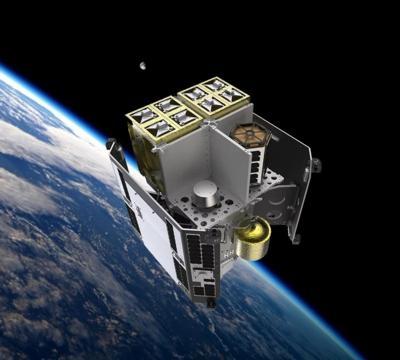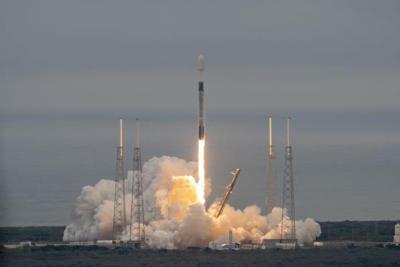Sun, Apr 03, 2022
D-Orbit's Package Includes Plant Growth Experiments, USAF Research Sats, and Personal Tchotchkes
D-Orbit's Spacelust has made its way into space aboard the SpaceX Transporter-4 mission, taking its spot as the 5th mission using their proprietary ION Satellite Carrier.

The ION system is designed to be a versatile and cost-effective orbital transfer vehicle designed both to precisely deploy satellites and perform technology demonstrations for third-party payloads in orbit. Spacelust saw the ION successfully deployed at a 500 km Sun synchronous orbit. D-Orbit chief commercial officer, Renato Panesi, said the 5th ION in its orbital fleet is a sign of their rapid growth.
“Every mission we launch is built upon the success of the ones that came before it," he said after news of a successful deployment was announced. "We are steadily increasing our performance with each new mission, expanding our customer base and growing our exceptional team. As we execute our strategic plans, we are continuing to demonstrate the strength of our technology and are advancing D-Orbit’s path to enabling the transportation and logistics infrastructure to drive the evolving space economy.”
Aboard the ION, payloads from Kleos Space, Upmosphere, and the Space Exploration Laboratory found their way to their designated positions. Kleos sent 4 satellites to augment their growing constellation, bringing the total to 12. The change will increase the average daily revisit rate to around 5 times per day over an area of interest as well as increase the accuracy of geolocation for frequency transmissions to within 300 meters for ISR customers around the world.
Upmosphere sent an oddity in line with the company's mission: A wooden UP-box containing customer mementos. Their operation advertises the capability to send personal effects into space for several years aboard the ION.

The Space Exploration Laboratory sent its 3U CubeSat, the PlantSat, in order to study the growth a plants in LEO in an environment designed to replicate conditions on the martian surface. It was joined by Suchai 2 and Suchai 3, which will perform "basic science research" funded by the U.S. Air Force Office of Scientific Research, a branch of the AFRL. The satellite data gleaned will be studied by multidisciplinary teams, which will "undertake cutting edge research on scientific exploration and technological development."
More News
Circle To Runway (Runway Number) Used by ATC to inform the pilot that he/she must circle to land because the runway in use is other than the runway aligned with the instrument appr>[...]
Aero Linx: National Aviation Safety Foundation (NASF) The National Aviation Safety Foundation is a support group whose objective is to enhance aviation safety through educational p>[...]
At Altitude Of About 250-300 Ft Agl, The Airplane Experienced A Total Loss Of Engine Power On November 6, 2024, at 1600 central standard time, a De Havilland DHC-1, N420TD, was inv>[...]
From 2009 (YouTube Edition): Three Hour Flight Was 'Flawless' -- At Least, Until Mother Nature Intervened For anyone who loves the aviation business, this was a VERY good day. Afte>[...]
Also: AMA Names Tyler Dobbs, More Falcon 9 Ops, Firefly Launch Unsuccessful, Autonomous F-16s The Air Force has begun ground testing a future uncrewed jet design in a milestone tow>[...]
 ANN's Daily Aero-Term (05.05.25): Circle To Runway (Runway Number)
ANN's Daily Aero-Term (05.05.25): Circle To Runway (Runway Number) ANN's Daily Aero-Linx (05.05.25)
ANN's Daily Aero-Linx (05.05.25) NTSB Prelim: De Havilland DHC-1
NTSB Prelim: De Havilland DHC-1 Classic Aero-TV: The Boeing Dreamliner -- Historic First Flight Coverage
Classic Aero-TV: The Boeing Dreamliner -- Historic First Flight Coverage Airborne-NextGen 05.06.25: AF Uncrewed Fighters, Drones v Planes, Joby Crew Test
Airborne-NextGen 05.06.25: AF Uncrewed Fighters, Drones v Planes, Joby Crew Test




